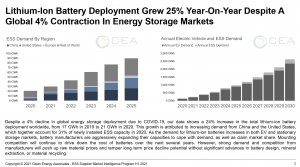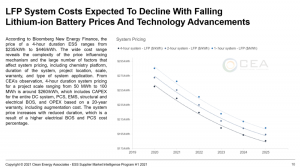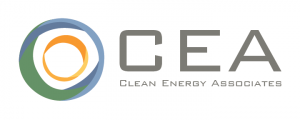
Latest energy storage survey projects global lithium-ion battery cell production capacity to exceed 2,500 GWh by 2025
Clean Energy Associates' survey of major manufacturers suggests the global lithium-ion battery cell production capacity is expected to exceed 2,500 GWh by 2025.
The COVID-19 pandemic negatively affected the energy storage sector in 2020, with cancelled shipments, logistical delays, and reduced demand from end-users due to a temporary halt on renewable energy projects. However, market conditions started improving in the second half of 2020 on account of economic stimulus packages increasingly supporting renewable energy sectors and preferential government policies and regulations for electrification.
Furthermore, new energy storage products and solutions were launched by various energy storage market players to offer higher energy densities and increased safety features in light of ongoing lithium-ion fire concerns.
Despite a 4% decline in global energy storage deployment due to COVID-19, CEA data shows a 24% increase in the lithium-ion battery deployment worldwide, from 17 GWh in 2019 to 21 GWh in 2020. This growth is attributed to increasing demand from China and the United States, which together account for 31% of newly installed ESS capacity in 2020. On the supply side, battery manufacturers are highly focused in expanding their capacities to capture the ever-increasing demand and maintain their market share in both EV and ESS sector.
Mounting battery fire issues are expected to push battery manufacturers to continue working on technologies and cell chemistries which demonstrate increased stability and are less prone to thermal runaway incidents.
After a spate of EV fires in China with high-nickel NCM batteries, BYD announced their plan to switch to LFP from NCM cell chemistry for its EV lines as it offers better safety. We also expect other suppliers to double down on safety features following renewed fire concerns and ever increasing LFP energy densities. Flow batteries and solid-state batteries are also discussed in the latest ESS SMIP report as alternatives to traditional lithium-ion battery technologies.
“Solid state-batteries are drawing a lot of attention, as their promise for high energy density and enhanced safety are critical for the EV industry’s goals,” stated CEA’s Director of Technology and Quality, George Touloupas. “However, they seem to be several years away from mass production.”
“At the same time, the goals of the ESS sector are increasingly diverging, as low cost and long cycle life are prioritized, with safety being easier to manage at the system level and LFP chemistry being inherently safer. Battery suppliers and integrators are moving to incorporate big cells into new product offerings to reach higher densities, while providing modularized options to reduce costs. It remains then to be seen if solid-state batteries will find a place in the ESS space, and this may not happen soon,” stated Touloupas.
As the industry gears up for a strong second half of 2021, CEA expects more suppliers to be focusing on supply chain optimization with cost increases on the horizon by becoming actively involved in material procurement.
The complete report, authored by CEA’s Technology and Quality team, is available for purchase and includes insights gathered from 1-on-1 interviews with the technical leaders at many of the industry’s leading suppliers.
Download Free Report Summary
Morgan Oats
Clean Energy Associates
pr@cea3.com
EIN Presswire does not exercise editorial control over third-party content provided, uploaded, published, or distributed by users of EIN Presswire. We are a distributor, not a publisher, of 3rd party content. Such content may contain the views, opinions, statements, offers, and other material of the respective users, suppliers, participants, or authors.




